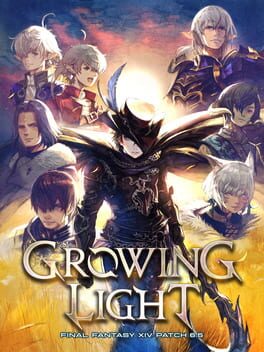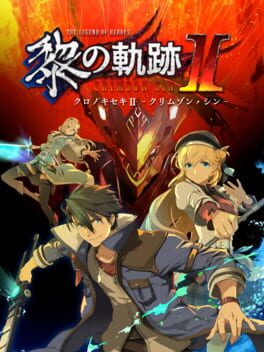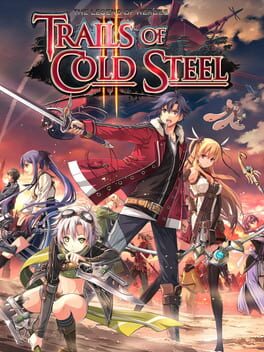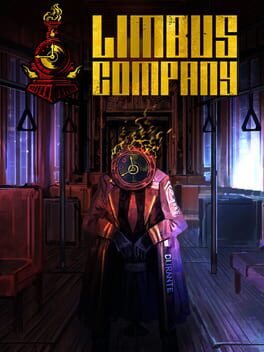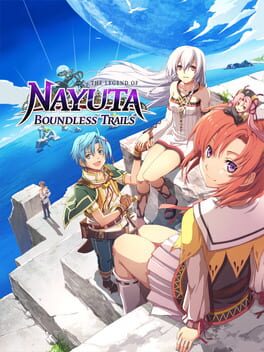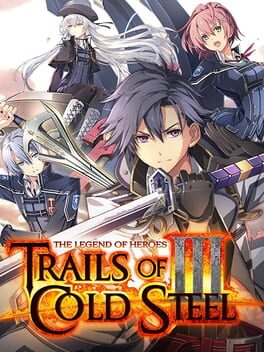triplesocks
74 reviews liked by triplesocks
Van Buren
TBD
Pros:
- The amazing combat system from Remake returns with new mechanics, status effects, abilities, and more.
- Level design has been improved from Remake, now with several more modes of traversal than before, and more ways of making your way through dungeons.
- The game world is incredibly content-rich throughout the entire game. Every new area has a new set of unique side-quests. Many of them (even if not all of them) offer additional character development, worldbuilding, and an absurd amount of mini-games with relatively deep mechanics.
- The difficulty is just as satisfying as it was in Remake. It’s satisfying to master the combat system and finish battles optimally with whatever character combination you have with you. You feel like you need to think about your actions, but you still always know that you have a chance to pull through when things get ugly.
- As the plot continues, many additions to the original game’s story go a long way to further accentuate the worldbuilding and characters. The new mystery introduced by Remake makes significant and fascinating developments, while also bringing up new questions that serve to build immense anticipation for the final game.
- Just like Remake, the characters are faithfully realized, and the insane amount of new interaction is a joy to see. Fantastic vocal performances, now with a bit less weird anime grunting!
- Great pacing with each portion of the story feeling rather worthwhile, whether because of it endearing the characters to you or for plot developments.
- Art direction and music are immaculate. Adaptive music makes its glorious return.
-Production value in general is incredible. Cutscenes/cinematography, animation, etc. are top of the line.
Cons:
- Despite level design improvements, puzzles and other roadblocks/pace setters lack much stimulation or variety after the first couple of instances (e.g. Red’s wall walking, mako vacuums, etc.).
- Most of the repeating world activity types were immediately obnoxious, like Lifesprings and Divine Intel.
- Needing to take only one materia at a time when transferring between party members can be somewhat tiresome.
- Despite plot additions being largely positive, things that were changed about the original story were a mixed bag. For example, despite the Nibelheim flashback being mostly incredible, certain dialogue and set pieces being cut down are a huge disappointment. For another example, the big scene with Barret (you know the one) was altered to be far less impactful than the original, for seemingly no reason. Scenes and visuals that are even more iconic and thematically important than this share this issue.
- Lighting took a hit in this game (the only exception in the otherwise great art direction). There’s that visual effect when you are indoors looking into the outdoors where the light from outside shines blindingly. This wouldn’t be as big of a deal if this effect didn’t seemingly also sometimes trigger when you are outdoors too, making the entirety of the background extremely washed out.
Score: 8/10, closer to a 9 than a 7.
- The amazing combat system from Remake returns with new mechanics, status effects, abilities, and more.
- Level design has been improved from Remake, now with several more modes of traversal than before, and more ways of making your way through dungeons.
- The game world is incredibly content-rich throughout the entire game. Every new area has a new set of unique side-quests. Many of them (even if not all of them) offer additional character development, worldbuilding, and an absurd amount of mini-games with relatively deep mechanics.
- The difficulty is just as satisfying as it was in Remake. It’s satisfying to master the combat system and finish battles optimally with whatever character combination you have with you. You feel like you need to think about your actions, but you still always know that you have a chance to pull through when things get ugly.
- As the plot continues, many additions to the original game’s story go a long way to further accentuate the worldbuilding and characters. The new mystery introduced by Remake makes significant and fascinating developments, while also bringing up new questions that serve to build immense anticipation for the final game.
- Just like Remake, the characters are faithfully realized, and the insane amount of new interaction is a joy to see. Fantastic vocal performances, now with a bit less weird anime grunting!
- Great pacing with each portion of the story feeling rather worthwhile, whether because of it endearing the characters to you or for plot developments.
- Art direction and music are immaculate. Adaptive music makes its glorious return.
-Production value in general is incredible. Cutscenes/cinematography, animation, etc. are top of the line.
Cons:
- Despite level design improvements, puzzles and other roadblocks/pace setters lack much stimulation or variety after the first couple of instances (e.g. Red’s wall walking, mako vacuums, etc.).
- Most of the repeating world activity types were immediately obnoxious, like Lifesprings and Divine Intel.
- Needing to take only one materia at a time when transferring between party members can be somewhat tiresome.
- Despite plot additions being largely positive, things that were changed about the original story were a mixed bag. For example, despite the Nibelheim flashback being mostly incredible, certain dialogue and set pieces being cut down are a huge disappointment. For another example, the big scene with Barret (you know the one) was altered to be far less impactful than the original, for seemingly no reason. Scenes and visuals that are even more iconic and thematically important than this share this issue.
- Lighting took a hit in this game (the only exception in the otherwise great art direction). There’s that visual effect when you are indoors looking into the outdoors where the light from outside shines blindingly. This wouldn’t be as big of a deal if this effect didn’t seemingly also sometimes trigger when you are outdoors too, making the entirety of the background extremely washed out.
Score: 8/10, closer to a 9 than a 7.
Limbus Company
2023
Is there anything more anime than a summer vacation on an idyllic tropical island built on the ruins of an ancient civilization, blue skies stretching to every horizon? Well sure, you could also be receiving training from a reclusive swordmaster, meet a floating fairy with a distrust for humans, and go on magical adventures on the other side of a portal that appeared by your house one day. These tropes, and more(!) are executed with Falcom’s typical virtuosity, striking a fine balance between familiarity and quality execution in The Legend of Nayuta: Boundless Trails.
What’s a good way to describe the plot of Nayuta? Initially I thought of it as a season of original anime (as opposed to an adaptation), it introduces characters and concepts at about the same rate, and the rhythm of its levels echo the pace of weekly repetition, though I’ll expand more on that later. Nayuta himself is the Socratic Ideal of a shounen anime protagonist, a headstrong goofy boy who gets lost in his musings and investigations, sometimes literally losing sleep over them. His more grounded friend, Cygna, is an expert swordsman who does his best to keep Nayuta’s feet planted on the ground, and together they run a cute little handyman business in their hometown on Remnant Isle. Like any good anime plot, the two quickly stumble upon a magical portal, an expansive alternate world, and a couple of intimidating figures that threaten the balance of nature. It’s up to the two to battle through these wondrous locales and Save the World, all while keeping things under wraps from their friends and family.
Eventually the plot balloons in scale, adding a whole “second season”, and even what I’d describe as an OVA for the epilogue! By the end I found it to be a bit too long for my tastes, but it does a good job of mixing up mechanics and keeping things fresh, constantly introducing new stages with new music and challenges, and pushing the challenge further and in different directions. The plot also delivers on some strong emotional beats. You’ve probably seen these types of story points elsewhere, but they’re executed well with appropriate buildups and payoffs, and everything feels earned and consistent tonally.
Structurally, the game plays out like a traditional platformer, with an ever expanding world map and stages as dots you connect along the way. Stages in the first half of the game are made unique by their continent in the magical world of Terra, but also with the season applied to the biome they’re in, something you can change at will once unlocked. What’s really interesting about these stages is that there are requirements to meet to earn up to 3 stars per level, with every 6 stars unlocking some new training from your swordsman master. You get one star just for beating a level once, another for finding all hidden crystals and treasure, and another for completing a stage specific mission, like beating a level without falling in pits or defeating a certain number of monsters. These goals provide a structure that instills the kind of familiarity that, again, reminded me of a weekly show. I began to intuit that the chests are almost always between the 2nd and 3rd crystals, for example, almost like looking forward to things like transformation sequences in serialized episodes.
The combat can be a little mashy, especially early on before you acquire many of the various skills and weapons, but it’s still fun to meet new enemies and scour stages for all their hidden goodies. Around the midgame, the player has access to plenty of special moves and abilities that facilitate the main pillar of combat: combo chains. As your combo chain grows Nayuta will receive buffs to his physical and magical attacks, as well as extra money and increased drop rates, making for some rather thrilling sequences where learning when to block, dodge, or simply pace out attacks between long stretches to really drive up the chaining and snowball your advantage.
The familiar rhythm of the game made it easy to chip away at bit-by-bit over about a month, especially since there’s nary a difficulty spike or prolonged backtracking sequence in sight, though I did play on normal and there’s plenty of challenge to be had on the higher difficulties and in the new game+ mode. That said, it’s a pretty breezy game overall, and I had a great time coasting through the gorgeous locales and they’re fantastic accompanying scores.
The great music is also just a single component to the main reason I’d recommend Nayuta to just about anyone: its impeccable vibes. It’s a game composed of so many cool little bits and bobs and ideas that you can’t help but find joy in it no matter where you look. The blocky polygonal look, the bright colors, the way Nayuta and his fairy companion Noi’s character models change with the gear they’re wearing, the monster descriptions in the bestiary, the lunchboxes, the whole ass Animal Crossing museum that tracks treasures you found and features an aquarium for fish you pick you up, and so on and so on for like, 50 hours. The game is absolutely bursting at the seams with soul and cozy vibes and there’s nothing quite like sitting down with it after a crummy day and having your world brightened just a little bit. In that way it does what I think all good games, heck, all good art, should do: it makes the world a better place, even if just a little bit, simply by existing.
What’s a good way to describe the plot of Nayuta? Initially I thought of it as a season of original anime (as opposed to an adaptation), it introduces characters and concepts at about the same rate, and the rhythm of its levels echo the pace of weekly repetition, though I’ll expand more on that later. Nayuta himself is the Socratic Ideal of a shounen anime protagonist, a headstrong goofy boy who gets lost in his musings and investigations, sometimes literally losing sleep over them. His more grounded friend, Cygna, is an expert swordsman who does his best to keep Nayuta’s feet planted on the ground, and together they run a cute little handyman business in their hometown on Remnant Isle. Like any good anime plot, the two quickly stumble upon a magical portal, an expansive alternate world, and a couple of intimidating figures that threaten the balance of nature. It’s up to the two to battle through these wondrous locales and Save the World, all while keeping things under wraps from their friends and family.
Eventually the plot balloons in scale, adding a whole “second season”, and even what I’d describe as an OVA for the epilogue! By the end I found it to be a bit too long for my tastes, but it does a good job of mixing up mechanics and keeping things fresh, constantly introducing new stages with new music and challenges, and pushing the challenge further and in different directions. The plot also delivers on some strong emotional beats. You’ve probably seen these types of story points elsewhere, but they’re executed well with appropriate buildups and payoffs, and everything feels earned and consistent tonally.
Structurally, the game plays out like a traditional platformer, with an ever expanding world map and stages as dots you connect along the way. Stages in the first half of the game are made unique by their continent in the magical world of Terra, but also with the season applied to the biome they’re in, something you can change at will once unlocked. What’s really interesting about these stages is that there are requirements to meet to earn up to 3 stars per level, with every 6 stars unlocking some new training from your swordsman master. You get one star just for beating a level once, another for finding all hidden crystals and treasure, and another for completing a stage specific mission, like beating a level without falling in pits or defeating a certain number of monsters. These goals provide a structure that instills the kind of familiarity that, again, reminded me of a weekly show. I began to intuit that the chests are almost always between the 2nd and 3rd crystals, for example, almost like looking forward to things like transformation sequences in serialized episodes.
The combat can be a little mashy, especially early on before you acquire many of the various skills and weapons, but it’s still fun to meet new enemies and scour stages for all their hidden goodies. Around the midgame, the player has access to plenty of special moves and abilities that facilitate the main pillar of combat: combo chains. As your combo chain grows Nayuta will receive buffs to his physical and magical attacks, as well as extra money and increased drop rates, making for some rather thrilling sequences where learning when to block, dodge, or simply pace out attacks between long stretches to really drive up the chaining and snowball your advantage.
The familiar rhythm of the game made it easy to chip away at bit-by-bit over about a month, especially since there’s nary a difficulty spike or prolonged backtracking sequence in sight, though I did play on normal and there’s plenty of challenge to be had on the higher difficulties and in the new game+ mode. That said, it’s a pretty breezy game overall, and I had a great time coasting through the gorgeous locales and they’re fantastic accompanying scores.
The great music is also just a single component to the main reason I’d recommend Nayuta to just about anyone: its impeccable vibes. It’s a game composed of so many cool little bits and bobs and ideas that you can’t help but find joy in it no matter where you look. The blocky polygonal look, the bright colors, the way Nayuta and his fairy companion Noi’s character models change with the gear they’re wearing, the monster descriptions in the bestiary, the lunchboxes, the whole ass Animal Crossing museum that tracks treasures you found and features an aquarium for fish you pick you up, and so on and so on for like, 50 hours. The game is absolutely bursting at the seams with soul and cozy vibes and there’s nothing quite like sitting down with it after a crummy day and having your world brightened just a little bit. In that way it does what I think all good games, heck, all good art, should do: it makes the world a better place, even if just a little bit, simply by existing.

